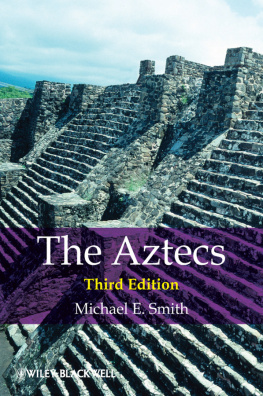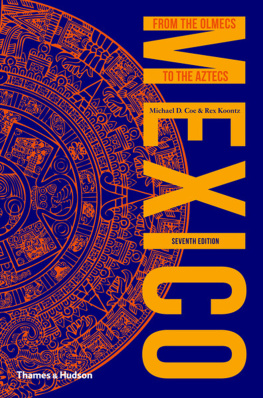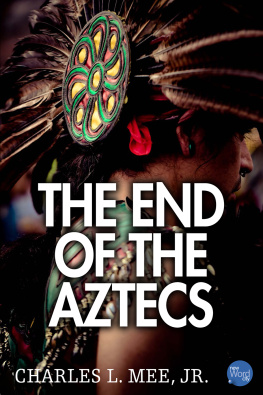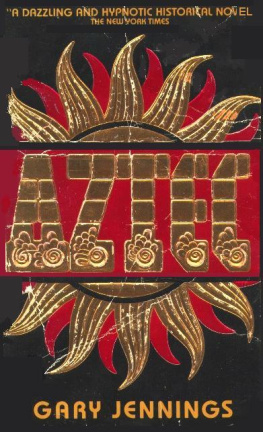JOE R. AND TERESA LOZANO LONG SERIES IN LATIN AMERICAN AND LATINO ART AND CULTURE
THE DEATH of Aztec Tenochtitlan,
THE LIFE of Mexico City
BARBARA E. MUNDY

UNIVERSITY OF TEXAS PRESS
AUSTIN
Copyright 2015 by the University of Texas Press
All rights reserved
Louisville, Kentucky
First edition, 2015
Requests for permission to reproduce material from this work
should be sent to:
Permissions
University of Texas Press
P.O. Box 7819
Austin, TX 78713-7819
http://utpress.utexas.edu/index.php/rp-form
LIBRARY OF CONGRESS CATALOGING-IN-PUBLICATION DATA
Mundy, Barbara E.
The death of Aztec Tenochtitlan, the life of Mexico City / by Barbara E. Mundy.
pages cm.(Joe R. and Teresa Lozano Long series in Latin American and Latino art and culture)
Includes bibliographical references and index.
ISBN 978-0-292-76656-3 (cloth : alkaline paper)
1. Mexico City (Mexico)HistoryTo 1519. 2. Mexico City (Mexico)History16th century. 3. NahuasMexicoMexico CityHistory. 4. AztecsMexicoMexico CityHistory. 5. Power (Social sciences)MexicoMexico CityHistory. 6. Mexico City (Mexico)Social life and customs. 7. Sacred spaceMexicoMexico CityHistory. 8. ArchitectureMexicoMexico CityHistory. 9. Water-supplyMexicoMexico CityHistory. 10. Mexico City (Mexico)Environmental conditions. I. Title.
F1386.3.M86 2015
972'.5302dc23
2014026617
doi:10.7560/766563
ISBN 978-0-292-76657-0 (library e-book)
ISBN 978-0-292-76658-7 (individual e-book)
Contents
Illustrations
FIGURES
TABLES
Acknowledgments
Many books are journeys; this one unfolded as I walked the streets of Mexico City, often side by side with other scholars whose passion for the place fed my own. Sharing ideas and observations with them has enriched this book. Memorable walks in search of the sixteenth-century city included those with Mara Castaeda de la Paz and Carlos Gonzlez Gonzlez around Moyotla in March of 2009; two months later, Mara, Clementina Battcock, and Sal Prez Castillo and I crisscrossed Cuepopan; John F. Lpez, Rosario and Luis Fernando Granados, Kristopher Driggers, and Sara Ryu hunted down the citys water systems with me in March of 2011; in May of 2012, over nine hours, Jonathan Truitt, William Connell, and I explored three of the four colonial parishes, or parcialidades; in January of 2013, Gibran Bautista y Lugo, Aaron Hyman, Sara Ryu, and Lynda Klitch braved the blazing sun with me in Moyotla; and most recently, Byron Hamann and I covered the southern cities (on bike, not on foot). I thank all of my fellow walkers for sharing their company and their ideas. Very much with us in spirit on all those walks (although not in person) was Edward Calnek, whose work on the sixteenth-century city and generosity with material have benefited us all.
Those walks, like this book, had their antecedent in research carried out for a volume on the Beinecke Map, now at Yales Beinecke Rare Book and Manuscript Library, and in April of 2007 Pablo Escalante, Saeko Yanaguisawa, Alejandro Alcntara, and I went in search of Atlixocan. My particular thanks go to Mary Miller and Dennis Carr, who first invited me to speak at the conference that resulted in the volume on the Beinecke Map. In addition to them, Mara, Pablo, Diana Magaloni Kerpel, and Gordon Whittaker contributed to that book, and my understanding of sixteenth-century Mexico City has been enriched by ongoing conversations with all of them. Thanks also to Linda Arnold, Elizabeth Boone, Jeffrey Collins, Patricia Connelly, Gustavo Coronel, Jordana Dym, Mara Teresa Garca Garca, Salvador Guilliem, Gerardo Gutirrez, Patrick Hajovsky, Leonardo Lpez Lujan, Xavier Noguez, Michel Oudijk, Dorothy Tanck de Estrada, Emily Umberger, and Olga Vanegas, as well as to the two anonymous reviewers for the press, whose suggestions helped make this a better book. While in Mexico City, I have been indebted to the hospitality and generosity of James Oles, Roberto Mayer, Laura Palazuelos, Miguel Legaria, and Cuca Valero. It has been a privilege to work with so many talented students during the course of research, including Kristopher Driggers, Jorge Gmez Tejada, Sarah Hetherington, Aaron Hyman, Sara Ryu, and Lauren Toole. I also thank the staff at the Archivo General de la Nacin in Mexico City, especially Guillermo Sierra Araujo, and at Mapoteca Orozco y Berra, especially Carlos Vidali Rebolledo. My wonderful art historian colleagues at Fordham, both past and present, have been keen readers of the work in progress, and they include Kimberly Bowes, Andre Hayum, Kathryn Heleniak, JoAnna Isaak, Nina Rowe, and Maria Ruvoldt. Fordham University faculty grants also gave me necessary time off and resources to complete the book. Friendships have sustained me, particularly those with Jennifer Egan and Titia Hulst. The manuscript is a better work for passing through the careful scrutiny of Gloria Thomas, its copyeditor. But my deepest thanks go to Byron Hamann and Dana Leibsohn, who carefully read the manuscript, in Danas case twice, and offered excellent suggestions for improvement.
My husband, Gerry Marzorati, has lived patiently with me and this work, as have our two sons, Guy and Luca Marzorati, giving me support and encouragement through it all: it is to these men in my life that I dedicate this book.
A Note on Spelling and Translations
In the text, Nahuatl words are spelled without diacritics to mark glottal stops and vowel lengths, a common convention in scholarly literature. I am using the conventional spelling Moteuczoma for the rulers name, and the spelling adopted by Moteuczoma IIs legitimate children, Moctezoma, when referring to his descendants.
All translations from Spanish are mine, unless a published English translation is cited. All translations from Nahuatl are from the English or Spanish of the cited text, unless my translation is noted.
CHAPTER 1
Introduction
Todo ella en llamas de belleza se arde, y se va como fnix renovando... (All of it blazes in flames of beauty, and renews itself like a phoenix...)
BERNARDO DE BALBUENA, LA GRANDEZA MEXICANA
In 1518, the Aztec capital of Tenochtitlan was one of the worlds largest cities. Built on an island in the middle of a shallow lake, its population numbered perhaps 150,000.

FIGURE 1.1. Map of the Valley of Mexico, by Olga Vanegas.
In 1521, the Aztec capital of Tenochtitlan died. In 1521, Mexico City was born, and it lives today.
The death of Tenochtitlan is documented in the Third Letter of the Spanish conquistador Hernando Corts to Charles V of Spain, where it is equated with the citys physical destruction. The letter was written after the siege and the surrender of the citys rulers, and Corts, in describing his own victory, recounts how even distant indigenous rulers in Mexico had heard that Tenochtitlan had been destroyed and razed to the ground, and later in his account, he claims it was completely destroyed. Such representations would have profound implications for the shape of later historical narratives.
If the death of Tenochtitlan can be metered via physical destruction and political decapitation, its death as an indigenous city can also be traced in the disappearance of its name, not an imprecise index given how loaded the name was to early residents, who more commonly called themselves the Mexica, a term preferred here, comparable to the more recognizable moniker Aztecs.of Tetzcoco. These leaders founded their island city on this spot and gave it the name Tenochtitlan, a name drawn from the topography of the site of this miraculous event. Thus the name is not just a descriptive toponym but the location where Huitzilopochtli, a powerful warrior deity, chose Tenochtitlan as the island home for the Mexica, confirming their sense of themselves as his chosen people.
Next page











